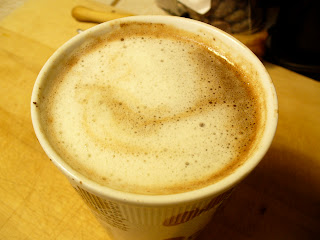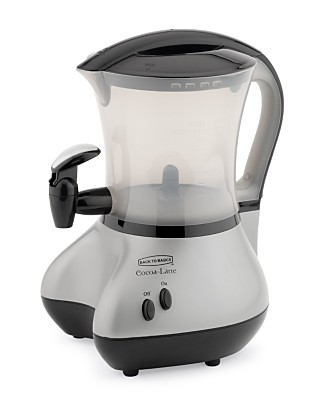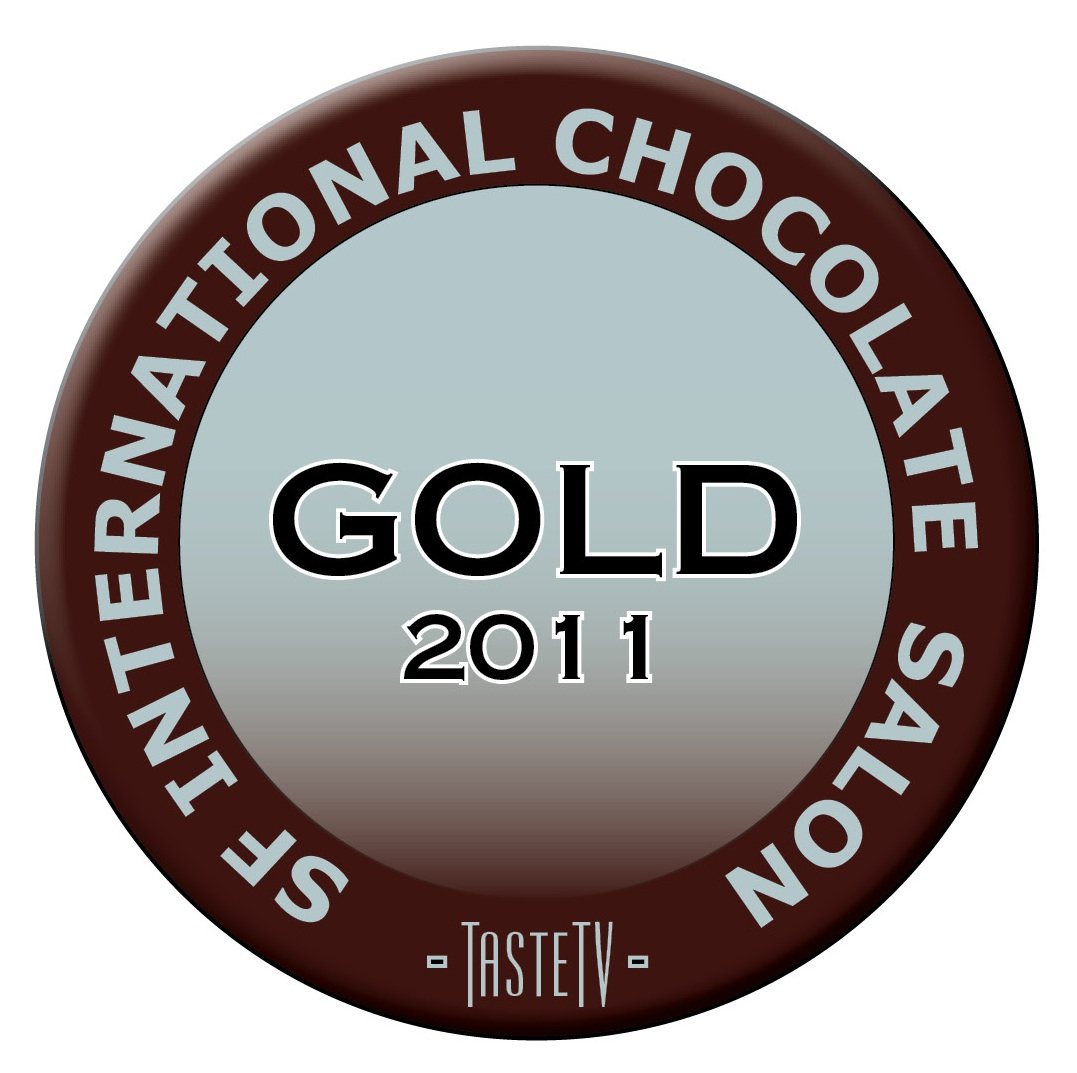This guilty pleasure began earlier this year while in Florence, Italy. At Caffe Nuove Poste, I enjoyed a chocolate croissant with a beautiful cup of cioccolata calda. I never really ordered chocolate croissants before, but this one had chunks of chocolate inside, and the dough was light, flakey, and buttery. As I began dipping the croissant into the rich, thick, dark drinking chocolate, I was in cioccolata heaven. And for only 1,20 euro which is only $1.60 US, it was a priceless experience. While I used the last bites of croissant to wipe clean my cioccolata calda, I knew my chocolate croissant quest had just begun.
Over the past few months, I've sampled a variety of chocolate croissants including some while still in Italy after my Florence revelation. One in Venice, for example, was beautiful on the outside, with unsweetened chocolate on top adding a nice crunch, but inside, the chocolate filling was a bit sparse and the croissant itself was hard.
One of the most humorous croissants was from our hotel in Florence. It came individually packaged, and though labeled "con farcitura al cacao", it was simply bread (a tasty lightly sweetened bread), with just a dab of chocolate inside.
That has been the story of much of my chocolate croissant quest -- most are too bready with sparse chocolate filling. Many look very inviting on the outside, but inside, there's nothing there, literally. All that an empty chocolate croissant is good for is dipping into hot cocoa, or my other new found pleasure, a café mocha. And with my new found love of "hot cacao", the hot cocoas, which are usually featured in coffee houses, just don't cut it. They are too sweet. I'd rather have a mocha which features a "bite" from the espresso, rounded out by the sweetness in the chocolate, and highlighted with steamed soy milk. A chocolate croissant with a mocha has become for me a perfect pairing.
With much studying to be done this semester for my doctoral program, I've spent a lot of time in different coffee houses, sampling mochas, croissants, and even hot cocoas. Most have proved rather unspectacular. There are two exceptions, however.
 The first comes from the coffee house closest to my place in the mountains. At Pescadero Country Store, the croissants are made onsite daily and feature Guittard Chocolate. The soy mocha is nice, but the chocolate croissant is spectacular. Usually there is chocolate overflowing from the ends with a generous layer throughout the center so that chocolate stars in every bite. Of course, the one time I go to officially review and photograph the chocolate croissant, the amount of chocolate is "average" in that there is a little layer in
the center. I do however love the airiness and flakiness of this
croissant which literally melts in your mouth (probably because of all the
butter), and the sugary coating that crumbles with each bite.
The first comes from the coffee house closest to my place in the mountains. At Pescadero Country Store, the croissants are made onsite daily and feature Guittard Chocolate. The soy mocha is nice, but the chocolate croissant is spectacular. Usually there is chocolate overflowing from the ends with a generous layer throughout the center so that chocolate stars in every bite. Of course, the one time I go to officially review and photograph the chocolate croissant, the amount of chocolate is "average" in that there is a little layer in
the center. I do however love the airiness and flakiness of this
croissant which literally melts in your mouth (probably because of all the
butter), and the sugary coating that crumbles with each bite. From the picture on the left, you can see how airy and luscious this croissant is with its multiple flaky layers. You can also see the thin amount of chocolate on the bottom, which was a major disappointment on this study trip. Thus, not my top chocolate croissant pick anymore. In spite the chocolate croissant let down, I did stay at the Country Store for nearly 5 hours and got a lot of work done.
From the picture on the left, you can see how airy and luscious this croissant is with its multiple flaky layers. You can also see the thin amount of chocolate on the bottom, which was a major disappointment on this study trip. Thus, not my top chocolate croissant pick anymore. In spite the chocolate croissant let down, I did stay at the Country Store for nearly 5 hours and got a lot of work done. Though I love the chocolate croissant in Pescadero, partly because it is local (local, at least for me), another one of my favorite comes from Gerry's Cakes, a little bakery off the main road in downtown Menlo Park. I stumbled upon their shop by accident as I was exploring the side streets, trying to find a place to study. Though their storefront has no ambiance for studying, the chocolate croissant looked amazing, with chocolate oozing from the ends, which is the way I have come to like it.
I had it packed to go, then found a coffee shop where I ordered a mocha and their chocolate croissant. Yes, it was me, my books, a mocha, and 2 chocolate croissants. (What an afternoon!) While the one from Le Boulanger was very good (one of the better ones I've had), the chocolate croissant from Gerry's simply blew it away. The croissant itself was not very fluffy. It was almost flat, with a pastry-like texture. However, from the first bite, it melt in my mouth, with dark chocolate accents all the way to the very bittersweet end. It was heavenly, and though it only cost $2.00, it was golden. In my croissant quest, I've spent 2-3 times more on croissants that were not even worth it. Unfortunately, I do not yet have a picture of this chocolate treasure from Gerry's, but it looks a lot like the chocolate croissant pictured left.
In my chocolate world, all would be perfect if Bean Street (or Almare) had chocolate croissants from Gerry's (or Pescadero Country Store), or if Gerry's served mocha with a better study ambiance, or if Pescadero had more consistency in its croissants. Unfortunately, that is not the reality. Thus I continue to explore and find chocolates which delight my passion and coffee houses which invite me the space to study. We will see where the croissant quest leads.
And so concludes (thanks to the U.K.) another Chocolate Week, and my excuse to share and celebrate my ongoing discoveries in chocolate. Stay tuned to see what new chocolate indulgences I unwrap next time on the blog.














































